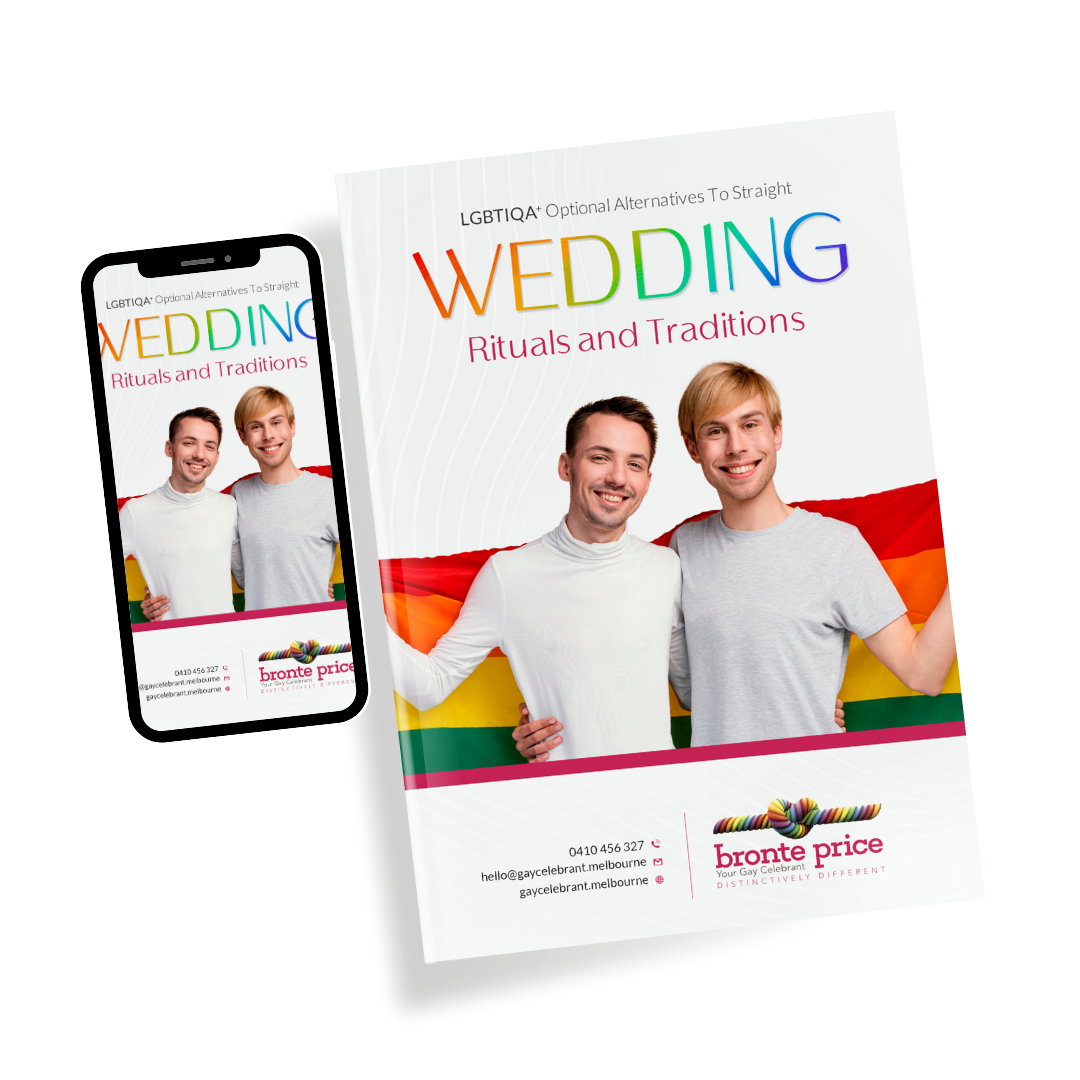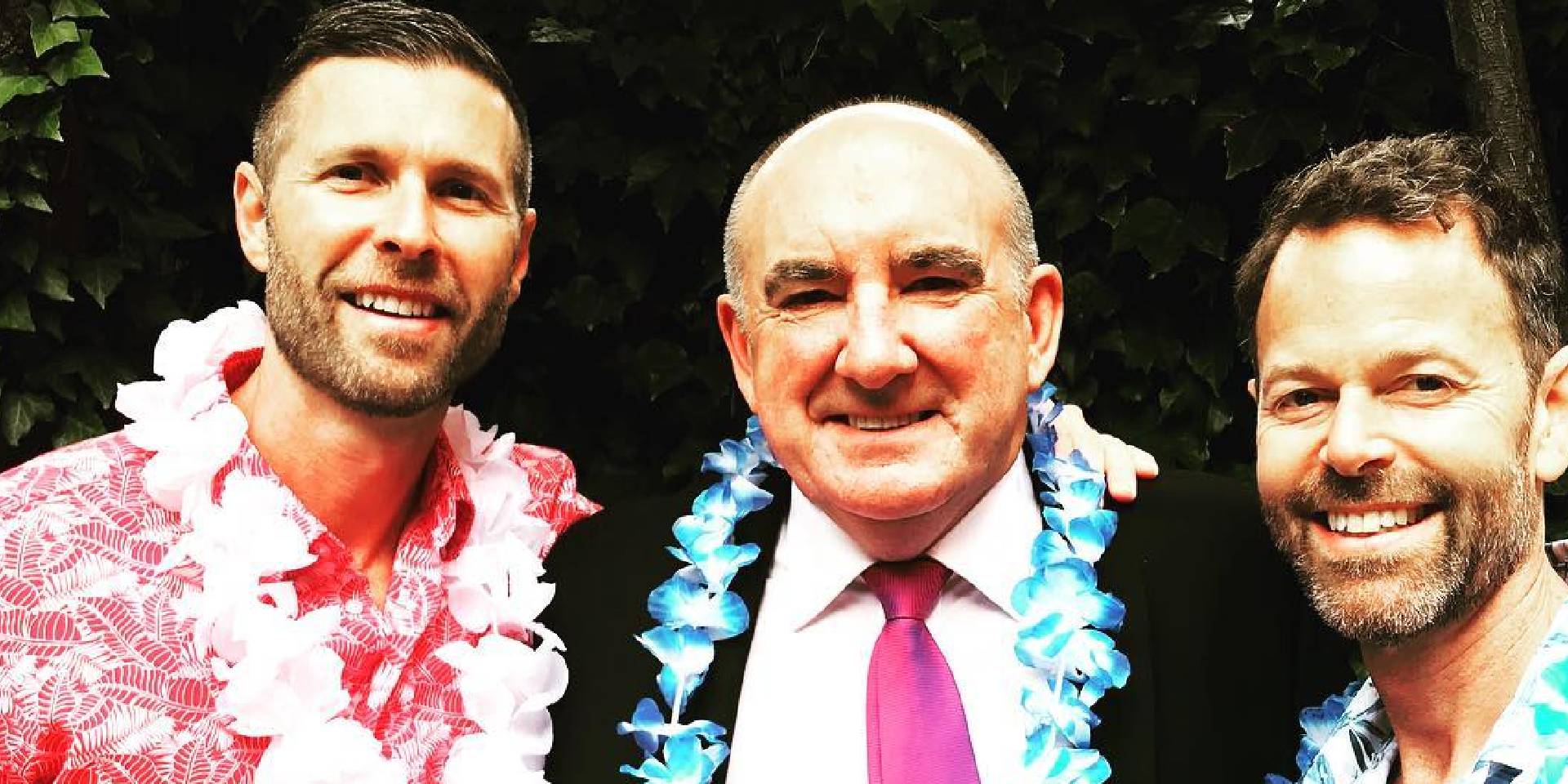
Let’s talk straight. Or perhaps not! Let’s talk queer!
The rituals and traditions associated with weddings are highly gendered and extremely heteronormative – or straight. Those rituals and traditions have evolved based on the gendered relationship that has traditionally existed between a man and a woman.
And although the institution of marriage and the wedding industry have both changed slowly over time, for the main, those gendered rituals and traditions have remained.
Therefore, it’s time we did gay weddings how we want to do them, rather than put up with a pale version of a straight wedding offering.
So, this blog is designed to start us on the way. It calls out almost 40 wedding rituals and traditions that have become part of straight weddings over the centuries. It outlines how each of those rituals and traditions began and what they mean. And, for each of them, it offers an LGBTIQ+ alternative.
Let’s start doing LGBTIQ+ weddings differently, and authentically!
Get free same-sex wedding rituals & traditions eBook today!
Sign up to download the whole list of 38 same-sex rituals and traditions as an eBook in printable PDF format.

